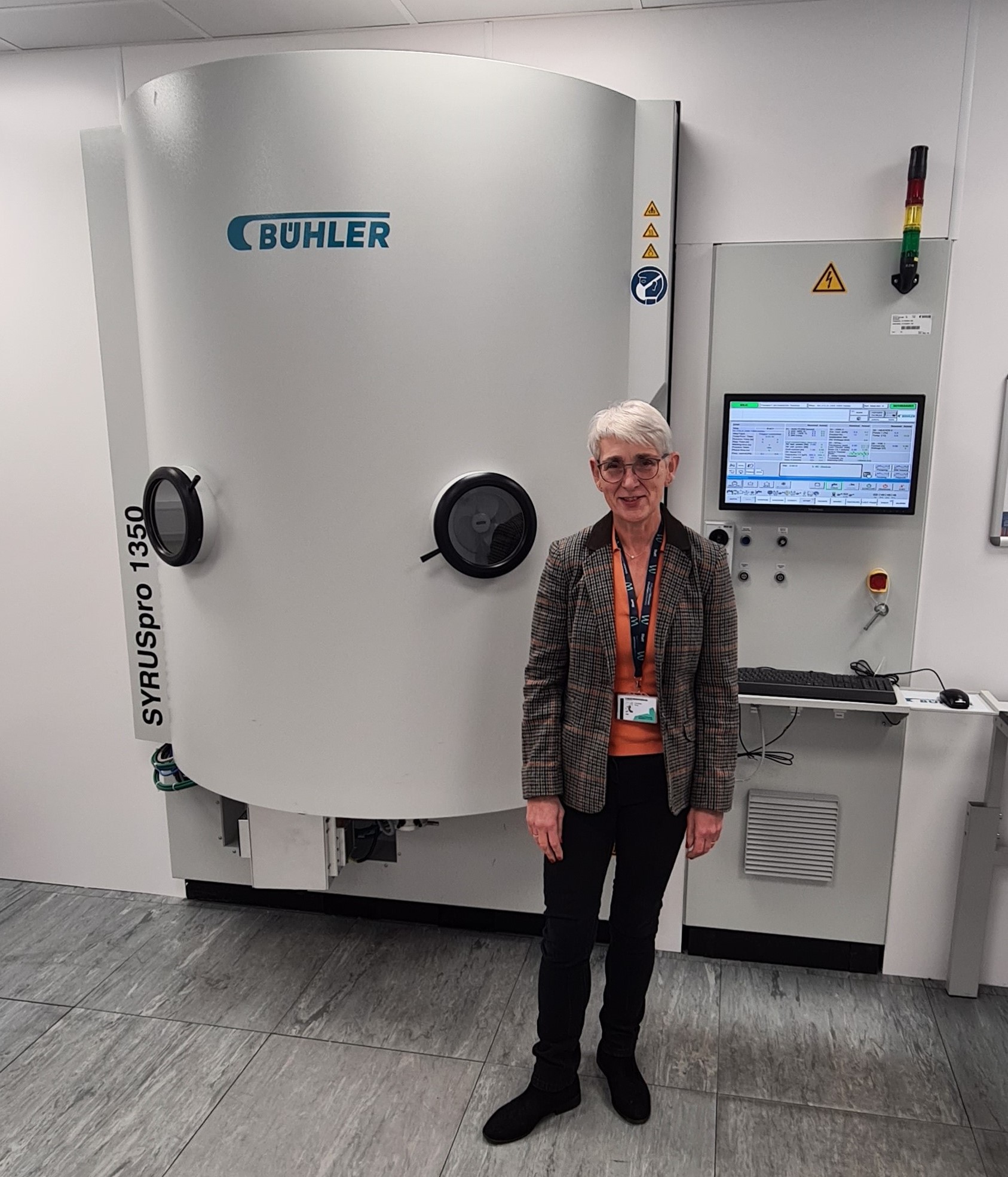Wrexham University’s Vacuum Thin Film Coating facility supporting Welsh-led mission to Mars

Date: Monday, December 18, 2023
A Wrexham University research facility based at the OpTIC Technology Centre in St Asaph is supporting a Welsh-led mission to search for life on Mars, which is due to launch in 2028.
Enfys, meaning "rainbow" in Welsh, is an infrared spectrometer and will be assembled at Aberystwyth University.
The optical components of Enfys are being manufactured by Qioptiq Ltd who have developed the coatings required using the Vacuum Thin Film Coating Facility based within the Centre Photonics Expertise, research facility at Wrexham University’s OpTIC Technology Centre.
Enfys will work alongside the robot's other camera systems to identify the most promising rocks to drill and test for evidence of ancient biology.
In recent weeks, the UK Space Agency announced that it will provide an additional £10.7 million to cover the development.
The Welsh instrument will be replacing an instrument from Russia. The rover, which was built by Airbus in Stevenage as part of a European Space Agency programme, was due to launch in 2022 but the collaboration with Russia’s space agency (Roscosmos) was cancelled following the illegal invasion of Ukraine.
The new funding will allow a UK team to replace the Russian-built Infrared Spectrometer for ExoMars (ISEM) so that the mission can recover its full scientific potential.
Enfys will identify targets on the surface of Mars for sampling and analysis, building on the scientific discoveries of the Mars rover mission. It will be hung from a mast holding the robot's camera platform, called PanCam, working in unison with high-resolution and wide-angle sensors to survey the Martian landscape.
Professor Caroline Gray OBE, Director of Wrexham University’s OpTIC Technology Centre, said: “We feel enormously proud that our Thin Film Coating Facility here at the OpTIC Technology Centre is supporting this Welsh-led mission to Mars.
“The Vacuum coating research facility being utilised to support the project partners was developed as part of the ERDF funded Centre for Photonics Expertise project, which concluded in December 2022, Prior to this project no facility of this type of research and development existed in Wales – so of course, it is fantastic that this facility is playing its part in supporting this world-leading Welsh-led space mission.”
Andrew Hurst, Coating Development Manager at Qioptiq, said: “Having such a state-of-the-art facility in North Wales has provided Qioptiq with an opportunity to develop some unique thin-film coatings to help support this ground-breaking mission.
“Qioptiq has utilised this facility since it was established to allow us to develop a range of high-end thin-film coatings that allow us to be competitive in a variety of markets across the world.”
Dr Matt Gunn, Principal Investigator on Enfys from Aberystwyth University, added: “The coatings play a vital role in ensuring the instrument meets its performance requirements.
“This project is on a very tight schedule and so having this specialist facility available to carry out the coating development has been an important part of making this demanding project possible.”
Wrexham University’s Thin Film Coating Facility is the first of its kind in Wales and allows companies to develop thin film technology products and applications.
Aberystwyth University are also being supported by University College London (UCL) and STFC RAL Space, as part of this work.
